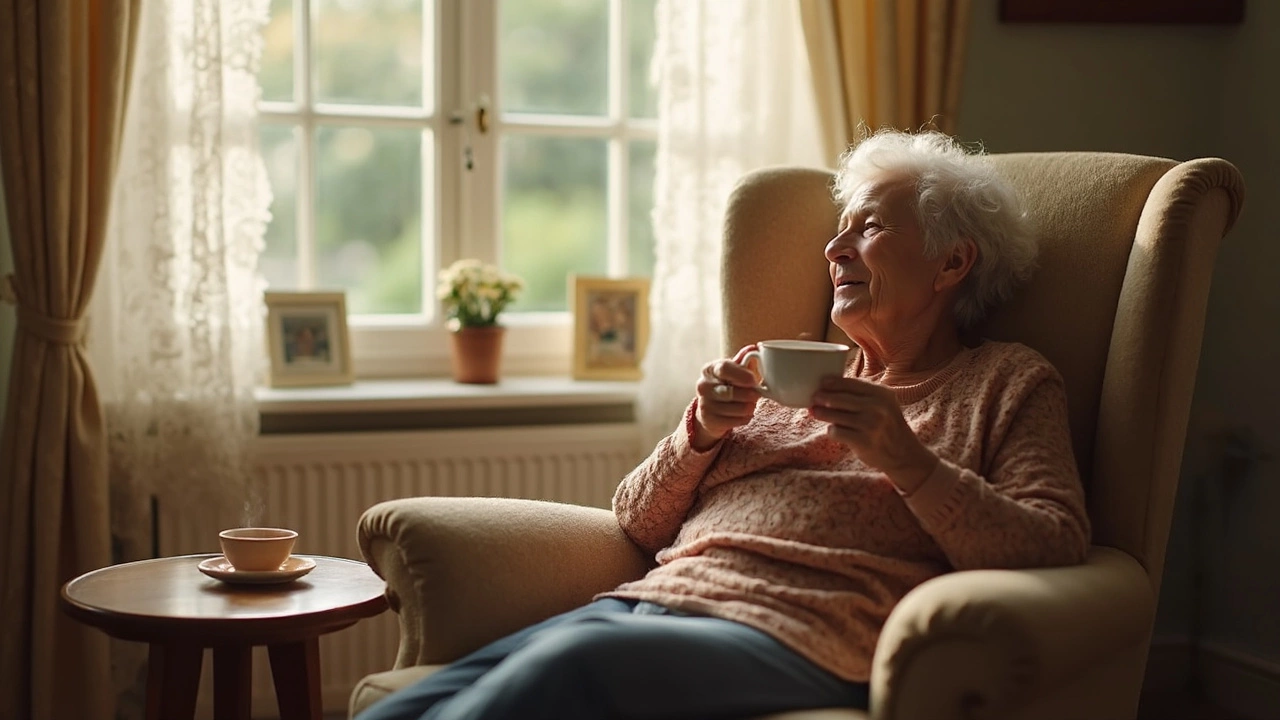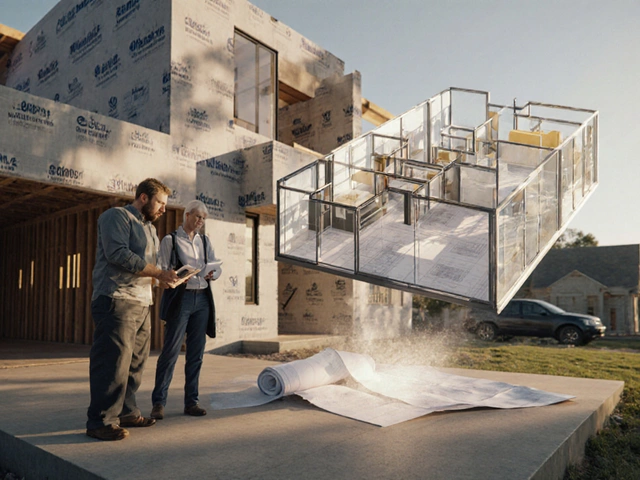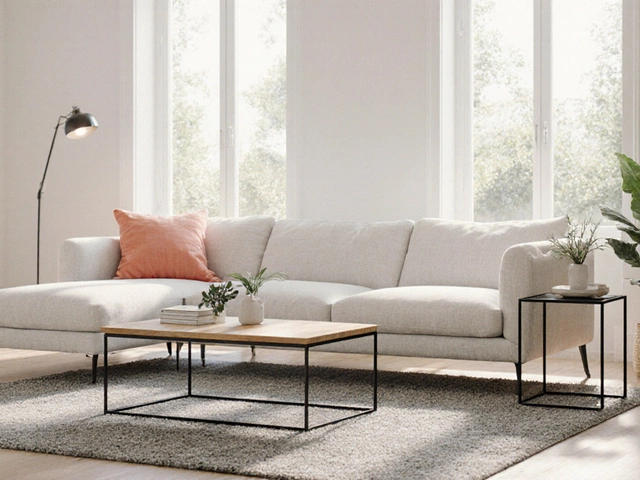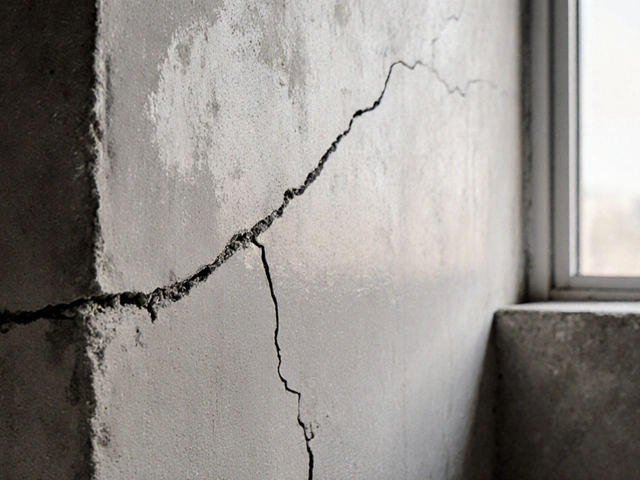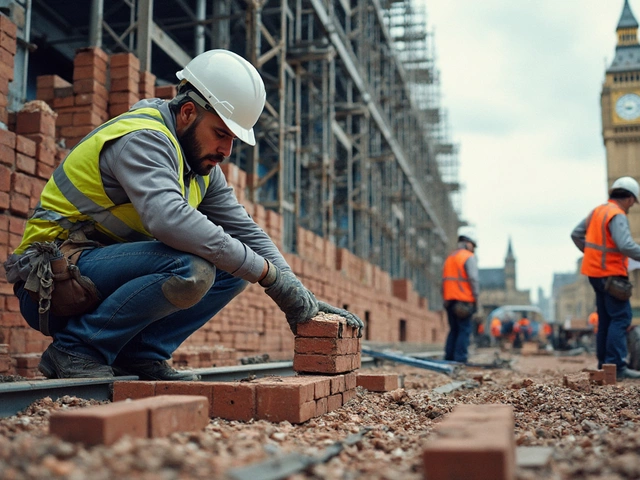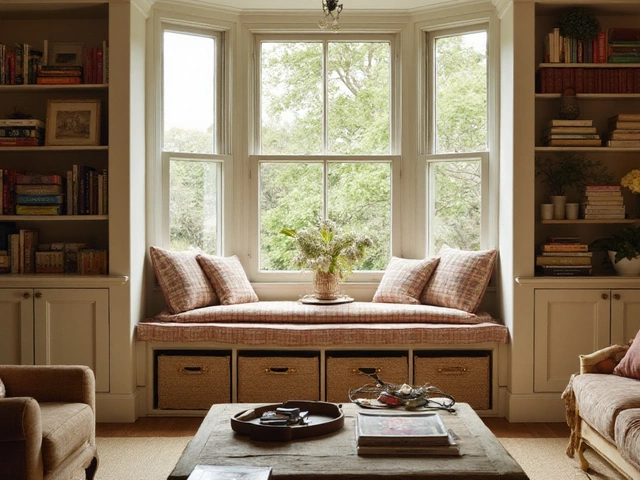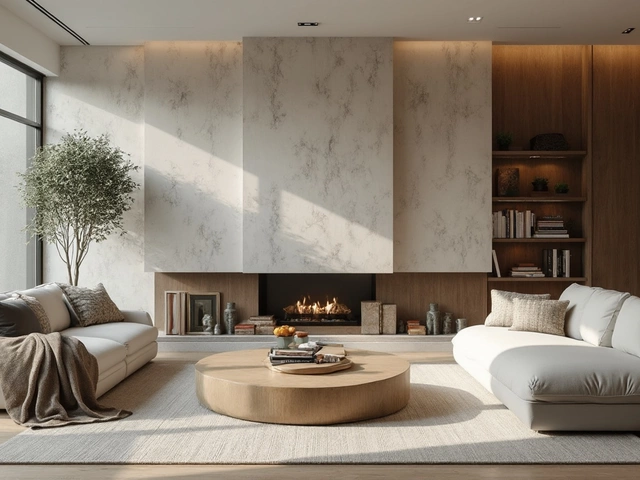Ever notice how some people swear by sleeping on the floor, while others cringe at the idea—especially when it comes to older folks? It isn't just a cultural thing; people genuinely want to know if it's really better or worse for seniors. Mobility, comfort, joint health, and fall risk are all on the table. So, if you’re considering ditching the bed for the floor, or you’re curious if recliner chairs are actually the safer and smarter option, the details matter.
Right away, the biggest concern with floor sleeping for older adults is safety. Getting up from the floor (and getting down there in the first place) isn't exactly easy for most seniors. The risk of falls skyrockets, especially in the middle of the night when nature calls or dizziness strikes. That’s not just inconvenient—statistically, hip fractures from falls are a major reason many seniors end up in the hospital.
- Why Sleeping on the Floor is Trending
- Risks and Downsides for Seniors
- Health and Comfort: Floor Beds vs Recliners
- Practical Safety Tips
- Making the Better Choice for Loved Ones
Why Sleeping on the Floor is Trending
This trend didn’t come out of thin air. You might’ve noticed how some people claim that sleeping on the floor fixes back pain overnight or helps them sleep deeper. A lot of this hype traces back to traditional Asian and minimalist lifestyles—think Japanese tatami mats or people rolling out a futon instead of a big mattress. The idea is that sleeping on a firm surface keeps the spine in better alignment, which, for some, means less pain and more mobility.
In the last few years, the floor sleeping trend caught fire in wellness circles on social media. Wellness bloggers and influencers post about improved posture, fewer joint aches, and even better sleep quality from tossing out the old bed. The logic goes: a soft mattress can sag, which may not support your back well enough. The floor, on the other hand, definitely won’t sag.
There's a study from a Japanese geriatrics journal published in 2022 that found around 18% of seniors in Tokyo reported sleeping on futons on the floor regularly. They liked the "grounded" feeling and simplicity, plus it was seen as normal in their culture. But, this isn’t the norm for seniors in the US or Europe, where raised beds or recliner chairs are more popular due to accessibility concerns.
So why are people still talking about it? Here are a few reasons:
- People with chronic back pain sometimes say firm surfaces help relieve pressure.
- Floor setups are cheap—no expensive frames or mattresses to buy.
- Some folks love the idea of simplicity and minimalism.
But while elderly sleep trends are worth looking at, you have to weigh the buzz against real-life bodies—especially as joints get crankier and balance isn’t what it once was. Just because it looks cool in a minimal Instagram post doesn’t mean it’s best for everyone, especially seniors.
Risks and Downsides for Seniors
Sleeping on the floor sounds simple, but for seniors, it brings up more problems than you might think. The biggest issue? Mobility. When joints are stiff and muscles get weaker with age, just getting up from the floor can feel like climbing a mountain. That struggle isn’t only uncomfortable—it raises real safety risks.
According to the CDC, falls are the leading cause of injury among older adults. Elderly sleep arrangements close to the ground mean more bending and shifting, which can throw off balance—especially at night or in low light. Getting up in a hurry only cranks up the risk when a bathroom trip calls at 2 A.M.
Beyond just falls, there are other downsides to floor sleeping for seniors:
- Joint Pain: Firmer, colder floors put pressure on hips, shoulders, and knees. Simple aches can turn into chronic pain after a few nights, especially for anyone with arthritis.
- Chilled Floors: As we age, the body’s ability to regulate temperature drops off. Sleeping on the floor, especially on hard surfaces, can make older adults feel extra cold, which isn’t just uncomfortable—it can affect circulation and sleep quality.
- Allergens and Dust: Carpets and floors collect more dust, pet dander, and other allergens down low. Breathing this in at night can mean scratchy throats, coughing, or worsening allergies.
- Getting Trapped: Seniors with back or muscle problems sometimes find themselves “stuck”—unable to get up without help, which can lead to panic or injury.
Here's a quick look at fall injury rates for context:
| Age Group | % Reporting a Fall (CDC 2023) |
|---|---|
| 65–74 | 27% |
| 75–84 | 35% |
| 85+ | 49% |
Dr. Sandra Peterson, a well-known geriatrician, summed it up simply:
"A setup that seems easy and natural for a younger person can be a serious hazard for seniors. Fall prevention and quick access to help are always the priorities."
So when weighing elderly sleep options, these risks make a strong case for safer choices—especially compared to beds or recliner chairs that can be adjusted and exited more easily.
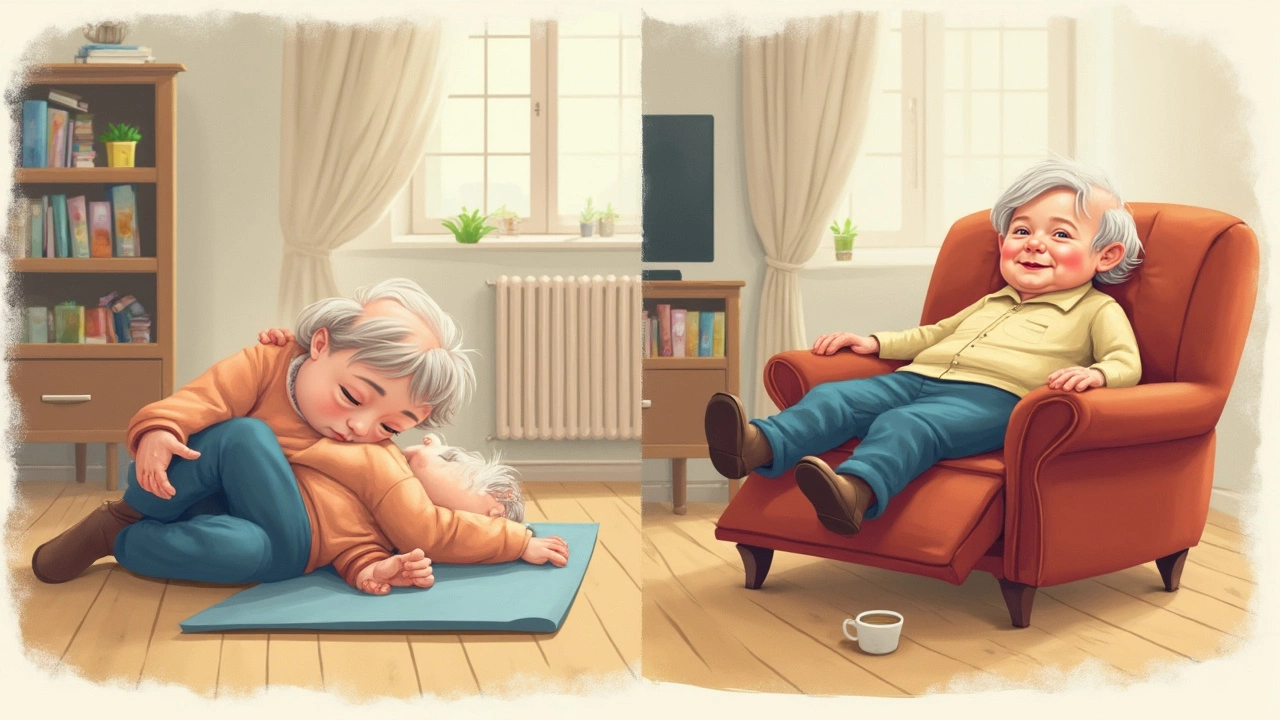
Health and Comfort: Floor Beds vs Recliners
Let’s compare floor sleeping and recliner chairs head-to-head on two big things: comfort and health. When older adults lie on the floor, even with a mat, it’s tough pressure-wise. You get very little support for your hips and shoulders, which can mean stiff joints in the morning. Folks already struggling with arthritis or back pain usually find the floor unforgiving. Plus, it’s chilly down there – cold floors can make pain and stiffness even worse.
With recliner chairs, support is the game-changer. Quality recliners have cushioning built for long-term use. You can adjust positions, which matters a lot for anyone dealing with acid reflux, heart issues, or sleep apnea. In fact, sleeping a bit upright (the way recliners allow) is sometimes recommended by doctors for easier breathing and digestion. Recliners also make it much easier to get up and down, compared to getting on and off the floor.
- Comfort: Recliners give more back, neck, and leg support than most floor setups.
- Ease of Use: For someone with weak knees or balance issues, standing up from the seat of a recliner is worlds easier than pushing up from the floor.
- Temperature: Recliners keep you off the cold ground and away from drafts—huge plus if your house is cool.
- Hygiene: Sleeping close to the floor exposes you to more dust and allergens. Recliner chairs stay cleaner with less effort.
There's research backing this up. A 2022 survey by the National Council on Aging reported that among seniors who switched to sleeping in recliner chairs after chronic discomfort in bed, over 70% said they felt better rested and had less morning pain. Only about 15% reported similar improvements from floor sleeping—usually those already used to floor beds in their culture.
| Feature | Floor Bed | Recliner Chair |
|---|---|---|
| Spinal Support | Poor for most seniors | Adjustable and supportive |
| Ease of Getting Up | Challenging | Easy with power/lever |
| Risk of Joint Pain | High | Low-moderate |
| Temperature Control | Poor | Good |
Bottom line, for most elderly people, recliner chairs are far more comfortable and a safer bet if health is a top priority. Floor beds might be fine if you’re exceptionally fit and don’t have joint trouble, but for most folks, recliners win by a mile.
Practical Safety Tips
If you’re even thinking about floor sleeping for an older adult, safety should come first. For a lot of people, even the idea is a no-go, but say you really want to try it—here’s how to lower the risk of injury and make it as practical as possible.
- Keep the spot clear: Make sure the area around the mattress or mat is free of trip hazards. Shoes, wires, and extra furniture can trip someone in a split second—especially at night.
- Lighting is a game-changer: Night lights or motion sensor lights help seniors see where they’re going if they get up. According to the CDC, most home falls happen at night, and poor lighting is a big reason for it.
- Use thicker mats: A thin yoga mat won't cut it. For elderly sleep, thicker floor mattresses (at least 4-6 inches) provide way more cushioning, making it less harsh on joints and easier to stand up.
- Install grab bars: Strategic grab bars near the sleeping spot help seniors get up or down with less strain. These are the same kind used in bathrooms, and they work just as well near a sleeping mat.
- Consider sleeping height: The closer to bed height you can get, the easier it is to stand up. Some people use small platforms or stack mats—just make sure nothing can slide out from underfoot.
But really, don’t overlook the benefits of recliner chairs. They let the user adjust their position with the push of a button or lever, and you can find models designed for seniors that lift you to a near-standing position. That’s hard to beat for senior comfort and safety. Plus, a 2023 AARP survey revealed that nearly 67% of seniors worry about nighttime falls and loss of balance, so comfort plus easy mobility isn’t just a nice-to-have—it’s huge for confidence and independence.
If you want to see the risks side by side, here’s a handy comparison:
| Sleeping Option | Ease of Getting Up | Fall Risk | Joint Comfort |
|---|---|---|---|
| Floor Sleeping | Low | High | Medium |
| Recliner Chair | High | Low | High |
Bottom line: be realistic about what’s safe. If getting up from the floor could cause a fall, or it’s already tough, a recliner chair made for seniors is usually the better call. If you try floor sleeping anyway, stop right away if you notice any pain or struggle—it’s not worth risking a trip to the ER.
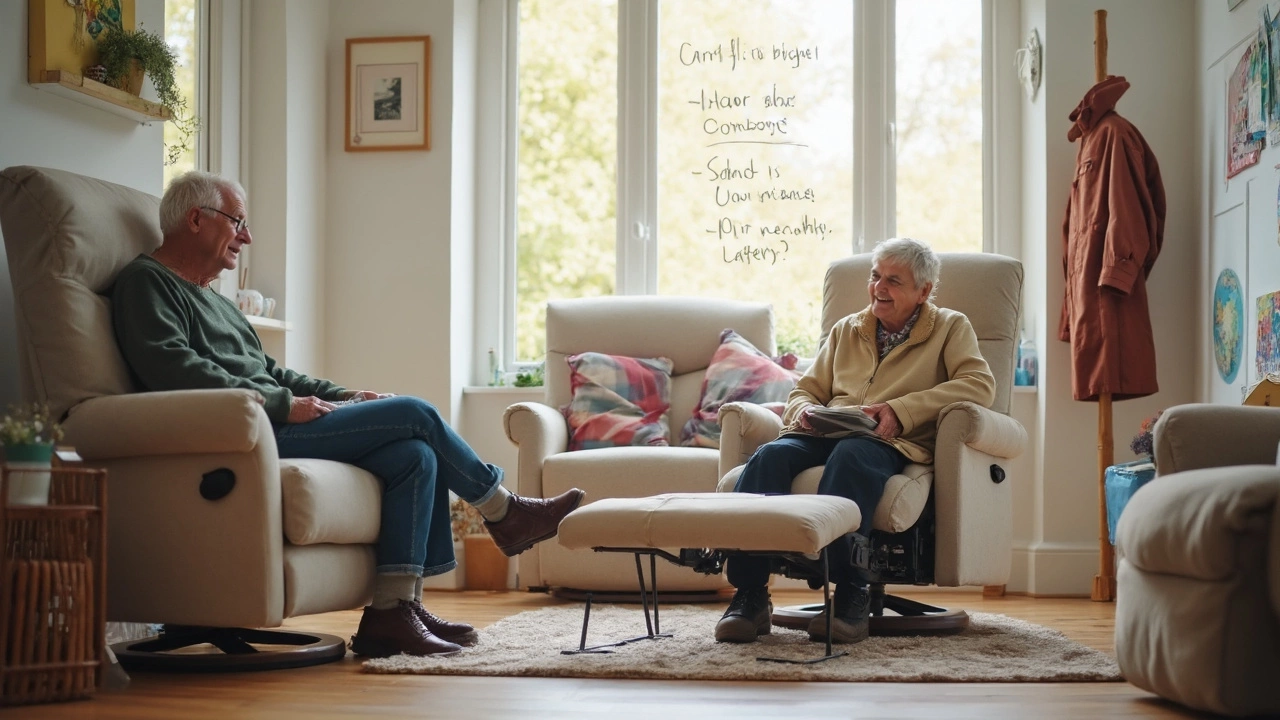
Making the Better Choice for Loved Ones
So what’s the bottom line when deciding between floor sleeping and investing in recliner chairs for the elderly? Let’s be real—most doctors and physical therapists will say that comfort and safety need to come first, and that’s where floor sleeping falls short for a lot of seniors. Getting up from the ground requires good leg strength, balance, and flexibility—traits that get tougher with age. Meanwhile, recliners are made for easy movement with minimal strain. In fact, recliner chairs that tilt forward or have lift options can take serious strain off knees and hips.
Plus, comfort matters more than you’d think. Thin floor mats and futons rarely offer enough joint support for seniors, especially those with arthritis, circulation problems, or back pain. Meanwhile, a decent recliner can be adjusted for leg elevation or full-back support to ease swollen feet and pressure points. For seniors dealing with conditions like acid reflux or sleep apnea, being able to sleep slightly upright—a feature you get in good recliners—can make a real difference.
It’s not just about the physical side, either. Seniors who have trouble sleeping on the floor often feel isolated or ashamed if they can’t get up easily, which takes a toll emotionally. Being able to relax in a supportive, easy-to-use chair can boost confidence and even help them sleep better, which is a win for everyone involved.
- Look for recliner chairs with sturdy armrests and power lift functions if your loved one struggles with mobility.
- Consider the specific health needs—reclined or slightly elevated positions can reduce problems like snoring or heartburn.
- Don’t ignore the social factor. A chair that allows seniors to settle in the living room means more family time than being stuck getting up from the floor.
If you’re on the fence, ask your doctor or physical therapist for advice specific to your loved one's medical history. And don’t be fooled by trends—what works for a 25-year-old isn’t always the best pick for someone in their 70s. When you weigh out practical needs, recliner chairs overwhelmingly come out ahead for elderly sleep and safety, while floor sleeping usually creates more problems than it solves.
| Feature | Floor Sleeping | Recliner Chairs |
|---|---|---|
| Ease of Getting Up | Hard for elderly | Easy, especially with lift options |
| Joint Support | Poor | Excellent (adjustable support) |
| Risk of Falls | High | Low |
| Adaptability for Health Issues | Limited | High (especially for acid reflux or swelling) |
